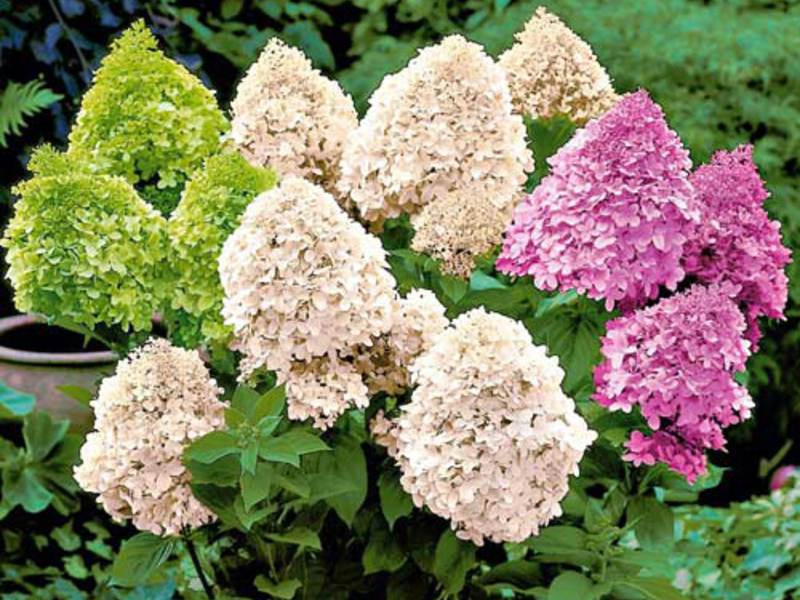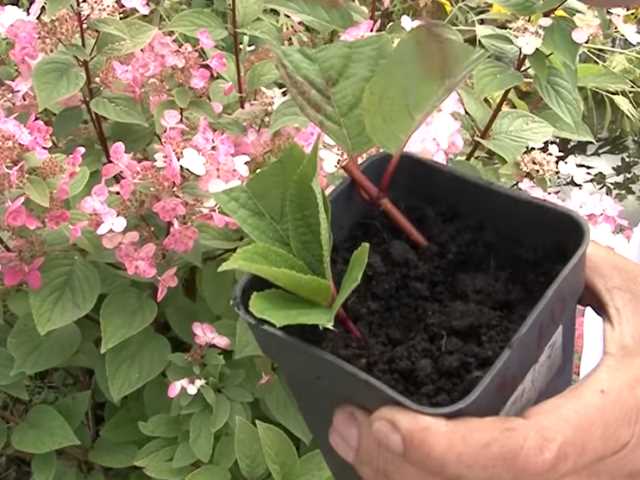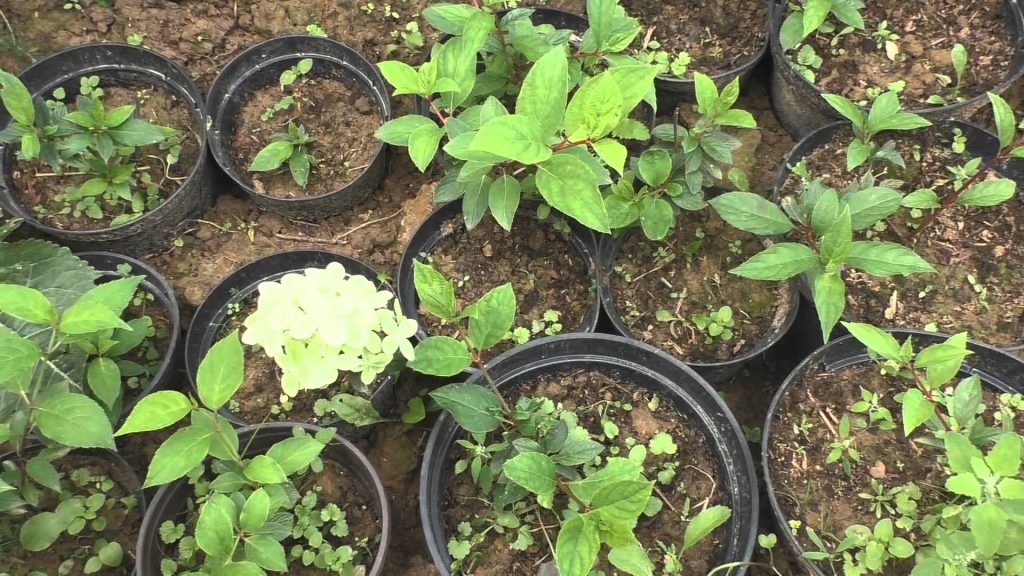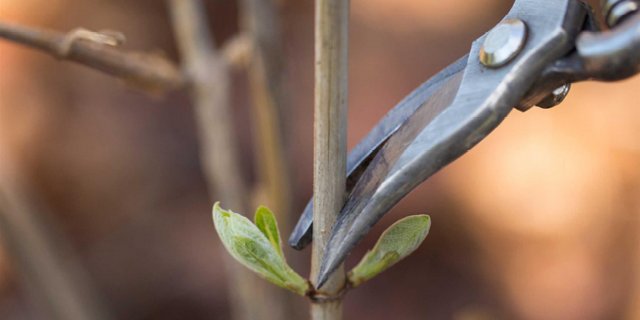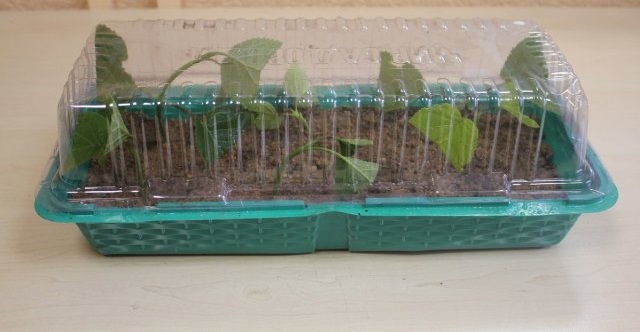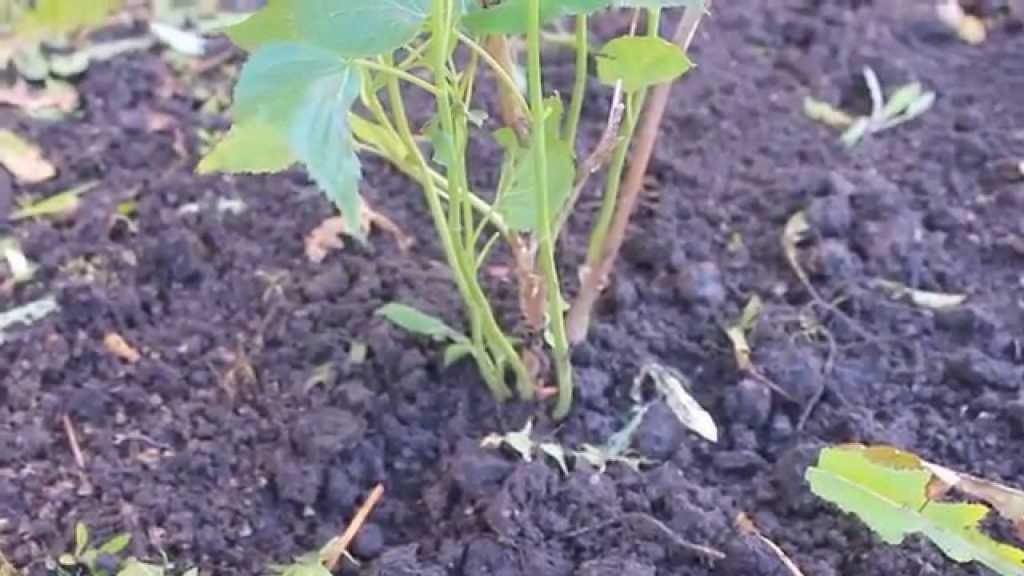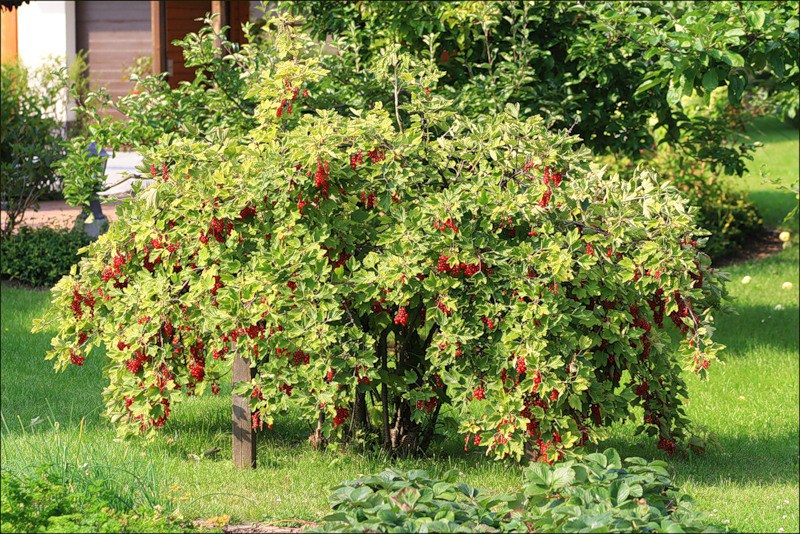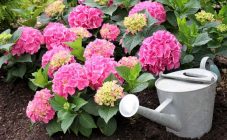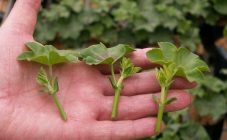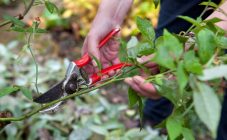Content:
The panicle hydrangea is the favorite of many gardeners. Its bright, spectacular inflorescences attract the attention of others and delight the eye. How to propagate a hydrangea bush is a question that interests both experienced summer residents and beginners.
Hydrangea is propagated in several ways:
- seeds;
- cuttings;
- layering;
- children (shoots);
- dividing the bush.
The most popular option for breeding hydrangea paniculata is called the cuttings method. It can be used for both the tree variety and other types of hydrangea. When using this method, all the varietal qualities of the parent bushes are preserved.
Hydrangea can be propagated almost all year round: in spring, summer, autumn, before winter. In winter, it is permissible to root the petioles at home.
Features of summer cuttings
Propagation of hydrangea paniculate cuttings in summer is considered the most effective. During this period, buds begin to form. Working hours: June 10-July 15.
- It is necessary to choose green cuttings that have not yet become woody, have not bloomed. They must be healthy, strong, well developed. Use young stems with buds (1-3 pcs). Petioles are cut from them.
- The seedlings planted under cans or foil are aired every day. Water once every 3 days. In drought - every day.
- It is preferable to harvest the petioles early in the morning. So the stems will retain the necessary moisture. Having cut them off, they are immediately divided. If you plan to do planting later, the shoots can be placed in the water. The tops of the branches with buds must be cut off. A month later (after 20 August), the petioles will take root.
This is how the panicle hydrangea is cuttings in summer.
Features of autumn cuttings
For propagation of hydrangeas in paniculate autumn, woody cuttings are taken. It is best to start grafting after September 15th. You can use normal soil consisting of peat and sand. It is important to create a favorable temperature, provide additional lighting, because the growing of young seedlings will take place in winter. Sprouts covered with jars should be watered at least 2 times a week. When irrigation occurs, it is advisable not to remove the shelter.
Features of winter cuttings
In the fall (second half of October) it is necessary to dig up the plants, transplant them into pots. Take it to the cellar, basement or greenhouse (the temperature should be from 0 to 5 degrees). If the bushes have preserved the leaves, they are placed in a bright room. If the leaves have fallen off, they are transferred to a dark place.
A mixture for planting should be prepared:
- compost (4 parts);
- peat (1 part);
- sand (1 part);
- turf soil (2 parts).
Another version of the soil mixture:
- sod land (4 parts);
- humus (2 parts);
- peat (1 part);
- sand (1 part).
In mid-January, you should move the hydrangea to a room where you need to maintain a temperature of 8-10 degrees. Now you need to transplant the bush (if you didn't do it in the fall).You should first feed an adult plant with a mineral complex (Superphosphate - 10 g, Potash and Ammonium nitrate - 5 g per bucket of water. At the end of February, young shoots will grow up, they will have 3-4 pairs of leaves. Then the cuttings can be cut and rooted.
Features of spring cuttings
You can propagate panicle hydrangea in spring. You need to cuttings before the start of the movement of sap in plants (March). For these purposes, use lignified branches growing on last year's bushes.
Cut branches are kept in water for 3-5 days. Then they are divided into several parts. Each fragment should have 3-5 buds. Then they are placed in a container with loose, moist soil.
How to harvest, cut cuttings
For cuttings, use the upper parts of the shoots. Each should have 2-3 sheets. Better to collect them in the morning. Choose healthy, strong branches. Cuttings are cut from them, they must have 2 internodes. The stems are divided into fragments. With a sharp knife, a cut is made (angle of 90 degrees) below the first node by one cm. From above, cut off 1 cm above (angle of 45 degrees) of the second point. The lower leaves are cut off, the upper ones are shortened by half a leaf.
How to process planting material
The shoots are left in the solution to form roots:
- Epin (2 ml / 2 l. Water) (soaked for 10 - 12 hours);
- HB101 preparation (1 - 3 drops / 1 liter of water) (for 30 hours);
- Kornevin, Zircon, Heteroauskin - use according to the instructions.
If there is no root stimulant, you can use a honey solution (1 teaspoon per 1 liter of water). The cuttings are immersed in a third, kept for 12 hours. After removal, rinse with water.
Rooting
The soil for planting is prepared in advance. Mix peat (2 parts), sand or leaf humus (1 part). Many people just use coarse sand. Moisturize.
It is necessary to plant the shoots at an angle of 45 degrees. They are deepened by 2-3 cm, leaving a space of 5 cm between them. They should not come into contact with each other and the ground. Then they are sprinkled with sand, a layer of 2 cm, sprayed from a spray bottle, covered with cans or film. They should take root in a month. The shelters are being removed.
You can grow roots in water for 20-30 days. True, there is a danger that they will simply rot. When the roots are 3 cm, the shoots are planted in the ground.
Tips for care, growing cuttings
Until the root is formed in the seedlings, they are placed in a dark place. This will protect the young growth from overheating. Comfortable temperature for plants during the day is 20-25 degrees, at night - 15-18 degrees. When the roots of the plants are 2-3 cm, they are seated in separate pots. The containers should be small (height 10 cm, the same diameter).
During cuttings in the fall, professional gardeners recommend using clay pots. Air circulates well in them, excess moisture does not accumulate. Drainage is usually poured onto the bottom with a layer of 2-3 cm. Earth is poured over it.
The bushes are planted in the garden 1-2 months after the roots appear. They are pre-tempered for a week. The first time the plants are left for an hour in the open air, gradually increasing the time.
For the winter, the plant should be protected from frost. Sprinkle the roots with dry foliage. Small props are placed around the bush. Wrap up with foil, spruce legs. Thus, the hydrangea is covered for the next two years. She needs to adapt during this time. When the bush blooms, it means that it has acquired frost resistance.
Paniculata hydrangea is an incredibly beautiful plant. While grafting is a hassle, it's worth it.
